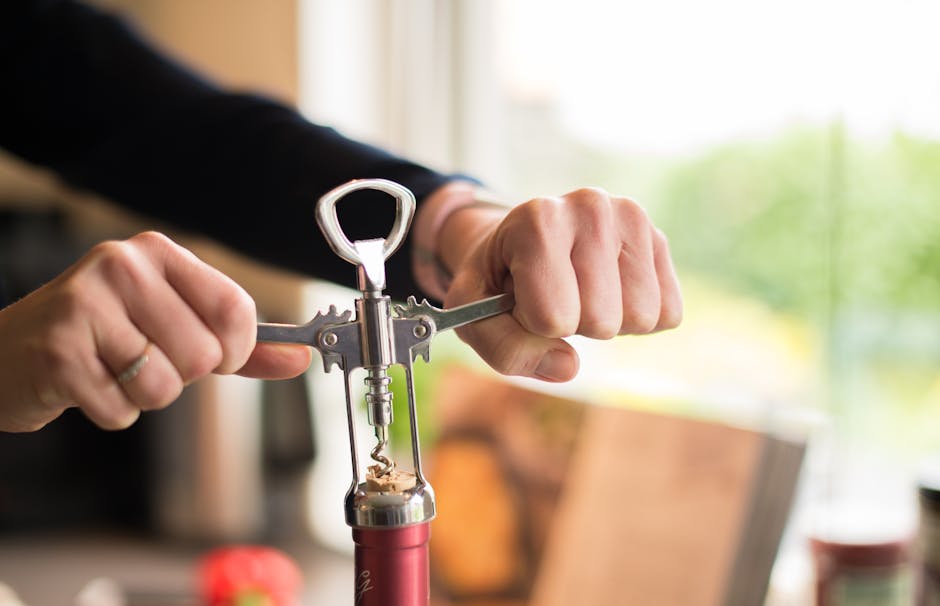
** Mastering the Art of Red Wine Stain Removal****
In the grand tapestry of life’s pleasures, few things are as delightful and equally perilous as a glass of fine red wine. The rich hues that evoke warmth and elegance in our gatherings can, at times, become unwelcome guests on our finest linens or favorite garments. Yet, fear not, for every spill is an opportunity to learn the subtle art of stain removal—a skill as essential as it is elegant.
The First Blot: Seize the Moment
Wine stains are the uninvited intruders of any celebration, but they don’t have to spell the end of a good time. The key to successful stain removal lies in immediate action. As soon as you notice that rogue spill, reach for a clean cloth or paper towel and gently blot—never rub—the affected area. This initial step is crucial; it prevents the wine from setting deeper into the fabric’s fibers, which can make the stain more stubborn.
The Salt Solution: A Time-Honored Technique
When dealing with carpets or rugs, salt is your steadfast ally. After blotting away as much of the spill as possible, generously cover the stained area with table salt. The salt acts like a sponge, absorbing the wine and lifting it out of the fabric. Allow the salt to sit until it dries completely—usually within a few hours—and then vacuum it up. If you find yourself without salt, baking soda, dry soap powder, or even talcum powder can serve as effective alternatives.
Dishwashing Detergent and Hydrogen Peroxide: A Dynamic Duo
For clothing stains, a mixture of dishwashing detergent (such as Dawn) and hydrogen peroxide is a powerful remedy. Combine equal parts of each and apply the solution to the stain. The hydrogen peroxide helps break down the wine’s pigments, while the detergent lifts the stain out of the fabric. Allow it to sit for a few minutes before washing the garment normally. This method works best on light-colored fabrics, as hydrogen peroxide can have a bleaching effect.
Boiling Water: A Hot Fix
If you’ve spilled wine on a tablecloth or another large, flat surface, boiling water can work wonders. Heat a kettle of water and pour it from a height over the stain while it’s stretched taut over a bowl in the sink. The hot water will help to flush out the wine, leaving your fabric as good as new. This technique is particularly effective for dried stains.
White Vinegar: A Versatile Ally
For both clothing and carpets, white vinegar is a versatile and effective stain remover. Apply the vinegar directly to the stain, which helps neutralize the red pigments. Follow with a liquid detergent and gentle blotting. For garments, wash in hot water after treatment. The combination of vinegar and detergent can effectively lift even stubborn stains.
Bleach: A Last Resort for White Fabrics
While bleach is not a go-to solution for every stain, it’s a powerful tool for removing red wine from white fabrics. Soak the fabric in a diluted bleach solution for about ten minutes before washing it in hot water. The stain should disappear without leaving any trace.
Baking Soda and Water: A Gentle Approach
For both clothing and carpets, a paste of baking soda and water can be an effective treatment. Apply the paste to the stained area after blotting away excess wine. Allow it to dry completely before vacuuming or washing as usual. Baking soda is known for its ability to absorb and break up stains gently.
What Not To Do
While the urge to scrub a stain might seem like a quick fix, it’s often more harmful than helpful. Scrubbing can spread the stain and drive the wine deeper into the fabric’s fibers. Similarly, using heat—such as a hairdryer or dryer—can set the stain permanently. Always opt for gentle blotting with cool water to avoid exacerbating the problem.
Additional Tips
If these methods don’t yield results, you might consider more specialized products like Wine Away, which is known for its effectiveness on even old and dry stains. However, if all else fails, or if you find yourself frequently battling wine stains, it might be a sign to switch to white wine—a decision that could save your fabrics (and perhaps your sanity) in the long run.
Recap: The Art of Stain Removal
– **For Clothes**: Blot immediately, use the salt method for fresh stains, and try dishwashing detergent and hydrogen peroxide for dried stains. For white clothes, bleach can be a lifesaver. – **For Carpets**: Use the salt method and always blot rather than scrub. – **For Couches**: Stretch the fabric taut before treatment and use the salt or dishwashing detergent methods.
In the end, while red wine may leave its mark, it doesn’t have to leave a stain. With these techniques in your arsenal, you can enjoy every sip with confidence, knowing that even the most unexpected spills are just minor hiccups in the grand celebration of life’s finest moments.
Questions & Answers
What is the first step to take when you spill red wine on fabric?
The first step in addressing a red wine spill on fabric is immediate action. As soon as you notice the spill, use a clean cloth or paper towel to gently blot—never rub—the affected area. This helps prevent the wine from setting deeper into the fabric’s fibers, which can make the stain more difficult to remove. Immediate blotting can absorb a significant amount of the liquid, reducing the intensity and size of the stain.
How can salt help in removing red wine stains from carpets?
Salt is an effective natural remedy for red wine stains on carpets because it helps to draw out the moisture and color from the spill. After blotting up as much wine as possible, sprinkle a generous amount of salt over the stain, ensuring it covers the entire area. The salt will absorb the remaining liquid and begin to clump together. Allow this to sit for about 15 minutes, then vacuum or brush away the salt. This technique can prevent the stain from setting and makes it easier to clean with subsequent treatments.
Why is it important not to rub a red wine spill on fabric?
It is crucial not to rub a red wine spill on fabric because rubbing can push the wine deeper into the fibers of the material, making the stain more difficult to remove. Rubbing can also spread the spill over a larger area and cause the color to set more firmly. Instead, gently blotting with a clean cloth or paper towel is recommended. This method helps lift the liquid from the surface without causing further damage or embedding the stain deeper into the fabric.
Information sourced from industry reports and news outlets.



![Flavor of the Land With Tequila Ocho [Infographic]](https://coffeewinetea.com/wp-content/uploads/2025/10/pexels-featured-20-360x240.jpg)
